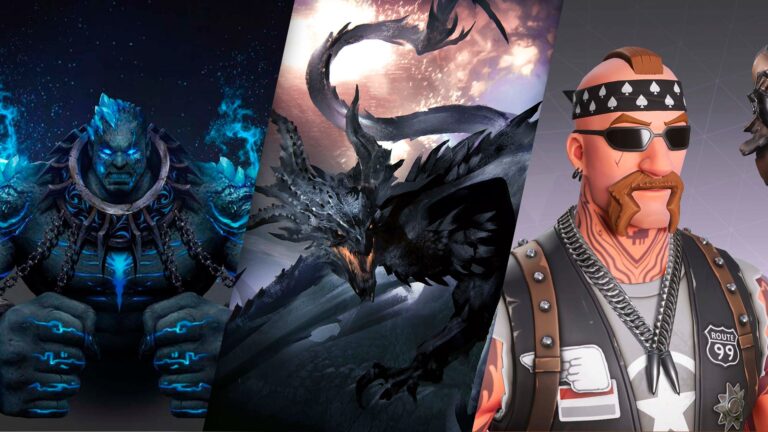When people talk about what makes a game stick in your memory, they usually bring up the obvious stuff gripping storylines, jaw-dropping open worlds, or characters that feel like old friends. But here’s the thing: the real magic often comes from something far quieter. It’s the cracks in the armor, the smudges on a tavern mug, the faint moss on an ancient wall. This is micro-detailing those subtle, handcrafted touches that you might not notice at first glance but would absolutely miss if they weren’t there.
Think about it: a sword with a tiny nick in its hilt doesn’t just look “cool” it feels like it’s been through battles. That moss creeping across stone doesn’t just decorate the scene, it whispers a history of years gone by. Studios that lean on 3D sculpting services know this is where immersion really happens. These are the little things that turn pixels into places you believe in.
Why Micro-Detailing Matters More Than Ever
Gamers today are sharp-eyed. A decade ago, repeating textures or flat, lifeless backdrops might’ve slipped by unnoticed. Now? They stick out like a glitch. Micro-detailing isn’t just a visual upgrade, it’s a trust builder. It says, “We cared enough to make this feel real.”
It’s also about emotion. That worn-out bench in a quiet park? It hints at countless conversations, heartbreaks, and reunions. A dusty bottle tucked away on a tavern shelf might spark curiosity about the celebrations that once filled the room. With the right 3D sculpting services, those little props become story fragments that players piece together without a single line of dialogue.
Textures That Tell Stories
Textures aren’t just decoration; they’re silent storytellers. The cracked leather on a hero’s armor says, “I’ve been through things you wouldn’t believe.” The faded paint on a spacecraft’s hull practically hums with the memory of asteroid belts and narrow escapes.
High-definition gaming has made these textures more important than ever. Skilled artists don’t just slap on generic patterns, they design them to reflect a world’s past, its culture, and its scars. Done right, these textures make you forget you’re staring at a screen.

Lighting: The Mood Maker
Lighting is the invisible hand guiding your emotions. A flickering bulb in a hallway? Instant suspense. Sunlight streaming through a canopy of leaves? Peace, safety, maybe even nostalgia.
Micro-detailing in lighting is about making light interact believably with every surface from the shimmer of wet stone to the faint shadow under a single feather. That’s why 3D sculptors often work hand-in-hand with lighting artists. It’s not just about showing the detail; it’s about making you feel it.
The Sounds You Don’t Notice (But Feel)
Micro-detailing isn’t only visual. It’s the creak of a wooden step, the soft crunch of boots on snow, the faint rustle of leaves before a storm. These sounds add a layer of truth your brain picks up on, even if you’re not aware of it.
In fact, the visuals and sounds often influence each other. A rusty metal grate will sound different from a marble floor and when the visuals are spot-on thanks to 3D sculpting services, audio designers can match that realism perfectly.
The Little Things That Make You Love a Character
Players don’t bond with characters just because of dialogue or epic cutscenes. They connect because the character feels human. Stray hairs, a jacket that’s been patched up three times, a sword with fresh scratches, these are the details that tell you who this person is without a single word.
Through careful 3D sculpting, a scar can hint at a tragic past, and a handmade clasp on a coat can tell you something about the culture your hero comes from. These touches are what make players care about characters as if they were real friends.
Worlds That Tell Their Own Story
A cluttered scientist’s desk. A half-collapsed bridge overgrown with vines. A child’s toy abandoned in the middle of a dusty road. These details let the environment speak no dialogue, no exposition, just visual clues for the observant.
The best 3D sculpting services don’t fill a space with random objects. Every item is intentional. Every scene feels like someone lived there before you arrived.
Detail Without the Lag
Of course, there’s a balance. More detail means more data, and more data can tank performance. That’s why studios work with sculptors to optimize assets, keeping all the beauty without making your GPU cry. Techniques like LOD (level of detail) modeling and texture baking make sure you get both: rich worlds and smooth gameplay.

AI and Procedural Magic (With a Human Touch)
AI can now generate textures, and procedural tools can scatter thousands of believable details across a world in minutes. That’s powerful but it’s not the whole picture. The most breathtaking game worlds still come from human vision, with AI acting as a helper, not a replacement.
With 3D sculpting services, artists can fine-tune AI-generated work so it fits the tone, lore, and emotional weight of the game. It’s about speed and scale without losing soul
Final Thoughts
Micro-detailing isn’t just a fancy extra anymore it’s a core part of game design. The smallest design choice can be the difference between a world you visit and a world you live in.
Studios investing in 3D sculpting services understand that detailed work directly impacts player engagement, reviews, and long-term success. And when we think about large-scale productions, considering the cost to develop a game like PUBG reveals just how much studios are willing to invest in crafting believable, captivating worlds. In the end, it’s these small, deliberate details that leave the biggest impressions.
